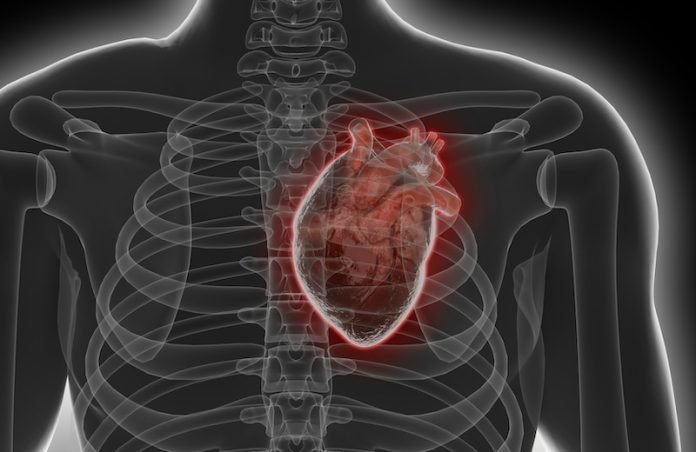
Most people are aware of the risks of carrying too much fat around the waist and hips, but there’s another kind of fat—hidden around the heart—that could also pose serious health risks.
Researchers at the University of Virginia (UVA) are working on a new, noninvasive way to study this unseen fat and assess its impact on heart health.
Their approach could help doctors better predict and treat heart problems like coronary artery disease, irregular heartbeat, and heart failure.
Led by Frederick H. Epstein, Ph.D., from UVA’s Department of Biomedical Engineering, the team is using magnetic resonance imaging (MRI) to study the fat around the heart, known as epicardial adipose tissue. This fat is natural and plays a protective role in healthy individuals.
However, in people with risk factors such as obesity, diabetes, high blood pressure, smoking, or poor diet, it can become inflamed, build up excessively, and release harmful substances that may damage the heart.
For the first time, this new MRI method can reveal the composition of the fat surrounding the heart. According to Dr. Amit R. Patel, a cardiologist at UVA, understanding the makeup of this fat is crucial.
“Depending on its composition, this fat can release harmful substances into the heart muscle, potentially leading to severe problems,” he explained.
The researchers believe that by identifying patients with unhealthy fat around the heart early, they can intervene with lifestyle changes like diet and exercise or possibly medications. This might help convert the harmful fat into a healthier type, reducing complications linked to heart disease.
The team’s method uses advanced MRI imaging to analyze the fat’s composition without surgery. It measures the amounts of different types of fat, including saturated, monounsaturated, and polyunsaturated fatty acids—fats commonly found in our diet.
By identifying unhealthy fat around the heart before symptoms appear, doctors could take steps to slow down or prevent the progression of heart disease, which remains the leading cause of death worldwide.
Developing this tool wasn’t easy. Both the heart and lungs are constantly moving, which made it difficult to get clear images of the fat. The UVA researchers overcame this by designing advanced imaging techniques that capture detailed pictures of the heart fat within a single breath hold.
This breakthrough required innovative computational methods to separate specific fat signatures from the surrounding noise in the images. Jack Echols, a graduate student on the team, played a key role in creating these methods.
The new MRI technique has already been tested in the lab and on a small group of patients. Early findings are encouraging.
In patients who were obese and had experienced heart attacks, the researchers discovered that the fat around their hearts contained an excessive amount of saturated fatty acids. This type of fat is associated with poor heart health, reinforcing the importance of monitoring its composition.
Dr. Patel emphasized the potential impact of this work: “Being able to see the composition of the fat around the heart will improve our understanding of heart disease. It could also help us develop better treatment strategies in the future.”
The researchers hope their method will eventually become a routine tool for assessing heart health. By detecting harmful fat around the heart earlier, doctors could offer more precise and effective treatments, leading to better outcomes for patients at risk of heart disease.
While the research is still in its early stages, the team is optimistic that this technology will pave the way for improved care and prevention of heart problems.
If you care about heart health, please read studies about how vitamin D influences cholesterol levels, and what we know about egg intake and heart disease.
For more health information, please see recent studies about best supplements for heart disease prevention, and wild blueberries can benefit your heart and brain.
The research findings can be found in Magnetic Resonance in Medicine.
Copyright © 2024 Knowridge Science Report. All rights reserved.



